This article is based on a thorough review of relevant authoritative literature and materials, forming a professional and reliable content. All data in the article is verifiable and traceable. Special note: The data and materials have been authorized. The content of this article does not involve any biased views and objectively describes the facts with a neutral attitude.
At the end of the article, there are the latest trending articles; if you’re interested, feel free to check them out.
Continuously updated: Hands-on learning of CUDA programming
Modern C++ Efficient Programming Practical Manual: From Project Pain Points to the Essence of Modern C++
Have you ever typed <span>std::endl</span> while writing C++ code and felt quite elegant? Hold on, I need to tell you, it’s not that simple! It not only serves as a newline character but also secretly flushes the output buffer, which can significantly impact performance. Today, let’s uncover the true nature of <span>std::endl</span>, discuss when it should be used, and how to use it efficiently without falling into pitfalls. I will also guide you to write some code and run it, so you can clearly grasp this “mystical” concept. Are you ready? Let’s dive into the world of C++ performance optimization!
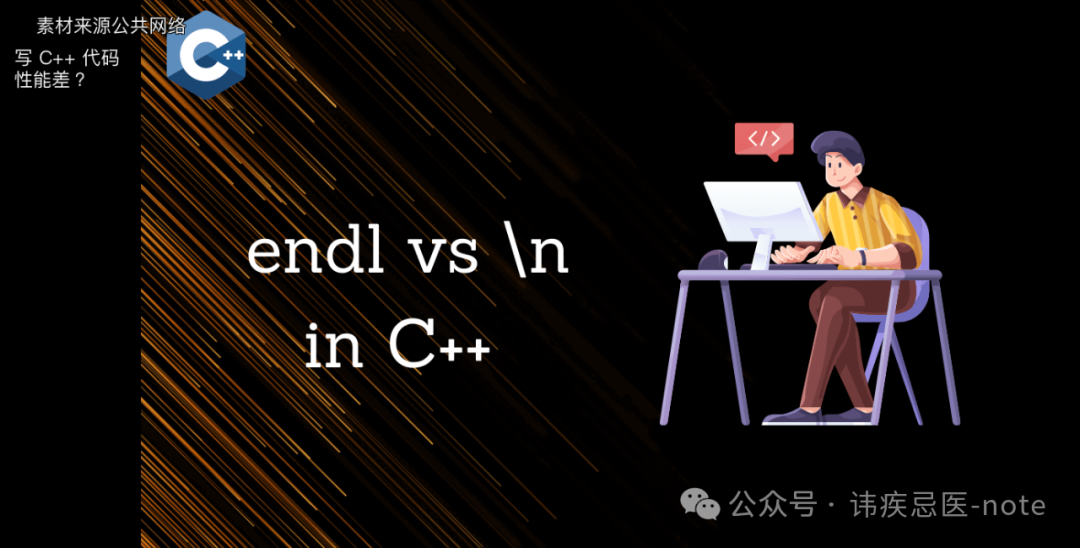
What Exactly is std::endl?
First, let’s talk about the basics. <span>std::endl</span> is a member of the C++ standard library <span>iostream</span>, which looks like a newline character, but it is actually a “double agent.” It does two things:
- Inserts a newline character
<span>'\n'</span>, causing your output to start on a new line. - Calls
<span>std::ostream::flush()</span>, forcing the contents of the buffer to be written to the device (such as the screen or a file) immediately.
The second point is crucial! The buffer is a good thing; it allows the program to accumulate some data in memory before sending it all at once, reducing the number of direct operations on hardware, thus increasing efficiency. However, <span>std::endl</span> refreshes the buffer every time, effectively nullifying this advantage. Sounds a bit like “self-sabotage,” doesn’t it?
The Performance Truth: std::endl vs ‘\n’
Don’t just take my word for it; let’s run some code and see how much <span>std::endl</span> really “holds back” performance. I designed two small experiments, one using <span>std::endl</span> and the other using <span>'\n'</span>, outputting 100,000 lines to see which is faster.
Experiment 1: Version Using std::endl
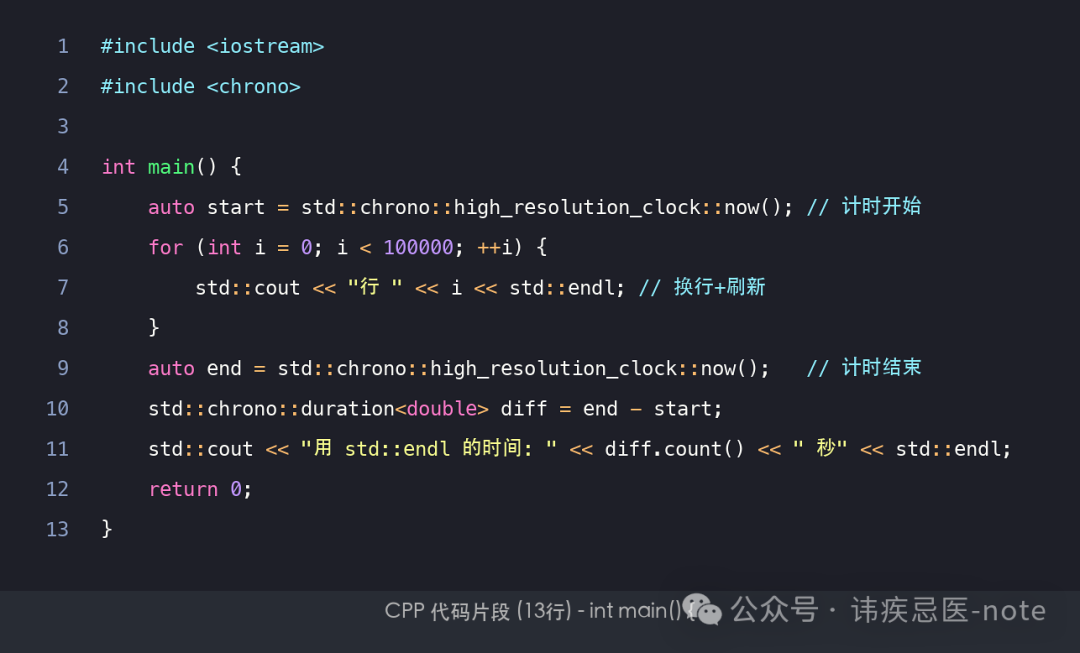
Experiment 2: Version Using ‘\n’
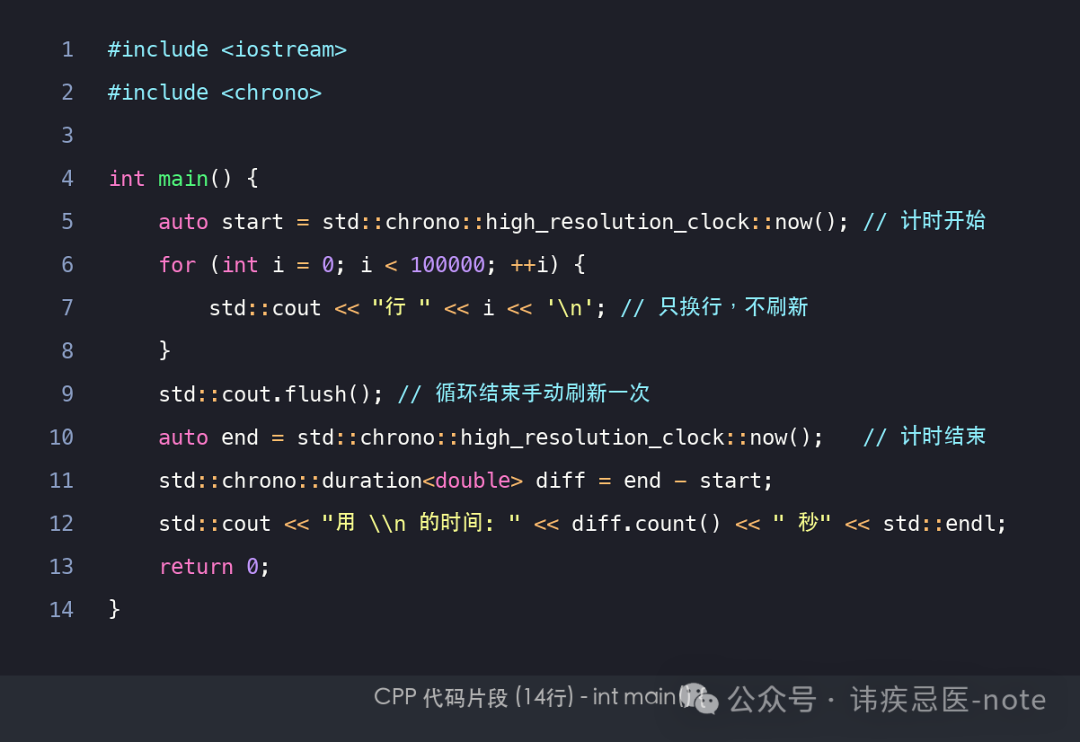
Running and Checking Results
I ran it on my machine (g++ 11.2), and the results were approximately as follows:
<span>std::endl</span>version: 2.3 seconds<span>'\n'</span>version: 0.15 seconds
The difference is a bit shocking, isn’t it? <span>std::endl</span> is over ten times slower! Why? Because it refreshes the buffer every time it outputs, frequently interacting with the hardware, while <span>'\n'</span> simply accumulates data and flushes it once at the end. This experiment tells me that unless you have special needs, <span>std::endl</span> is a “luxury” that should be avoided whenever possible.
When to Use std::endl?
Don’t get me wrong; I’m not saying <span>std::endl</span> is completely useless. It has its place, and we need to use it appropriately:
-
During Debugging, when writing code, you might want to see the output in real-time, such as checking variable values in a loop.
<span>std::endl</span>ensures that each output is displayed immediately and not hidden in the buffer. For example:
In this case, refreshing is very useful, and problems can be pinpointed at a glance.
-
Network Programming If you are writing server code to send data to clients,
<span>std::endl</span>ensures that the data is sent immediately and not left sleeping in the buffer. -
File Operations (Specific Scenarios) In multi-threaded file writing, timely flushing can prevent data from being out of order or lost. However, such scenarios are rare, and other synchronization methods are usually available.
But I must emphasize: these situations are the minority. 90% of the time, you do not need to flush immediately, and the performance cost of <span>std::endl</span> can be entirely avoided.
Best Practices: Smart Output Usage
After all this, I’ve summarized a few practical tips to help you write efficient and reliable C++ code:
1. Default to ‘\n’, Performance First
Unless there is a special need, use <span>'\n'</span> for new lines. It is simple and direct, without unnecessary flushing, ensuring high efficiency.
2. Batch Flushing, Use Sparingly
If you need to flush, don’t do it every time; wait until you have enough data to flush at once. For example:
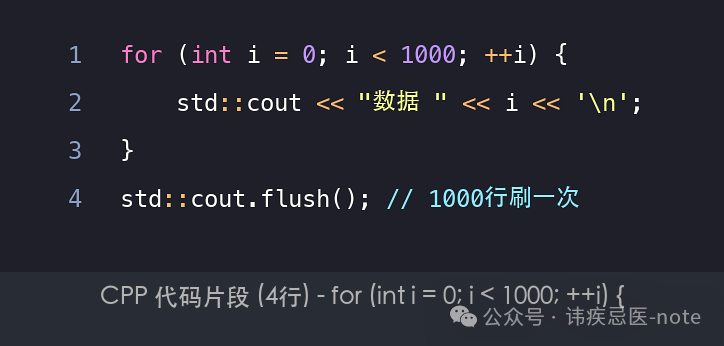
This is much faster than using <span>std::endl</span> every time.
3. Use flush() Independently
If you want to flush but not change lines, just use <span>std::cout.flush()</span>, clean and straightforward. For example:

4. Be Cautious with Unbuffered Mode
You can disable buffering with <span>std::cout << std::unitbuf;</span>, but this will cause every output to write directly to the device, leading to performance collapse. Unless you truly have real-time needs, avoid this lightly.
5. Don’t Ignore Platform Differences
Different systems (Linux/Windows) and compilers may handle buffering differently. When writing cross-platform code, it’s best to test it; don’t expect <span>std::endl</span> to behave consistently.
Small Case Study: Optimizing a Logging System
Theory aside, let’s look at a practical case: suppose you want to write a logging system to record program runtime events. The goal is to be both efficient and able to see key information in a timely manner.
Initial Version: Performance Killer
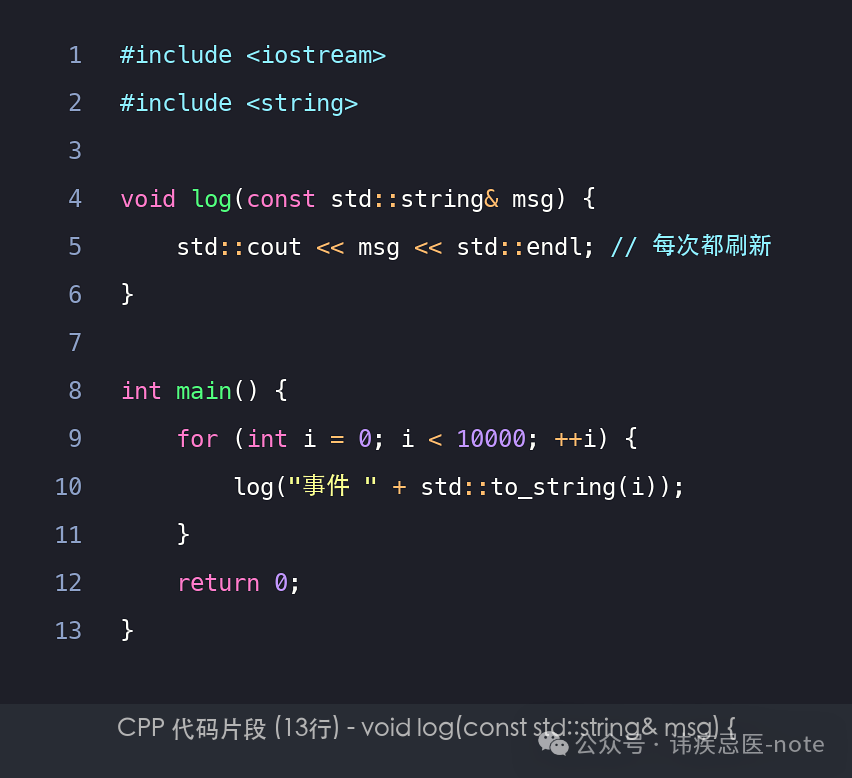
This code uses <span>std::endl</span> for every log entry, resulting in terrible performance.
Optimized Version: Efficient and Practical
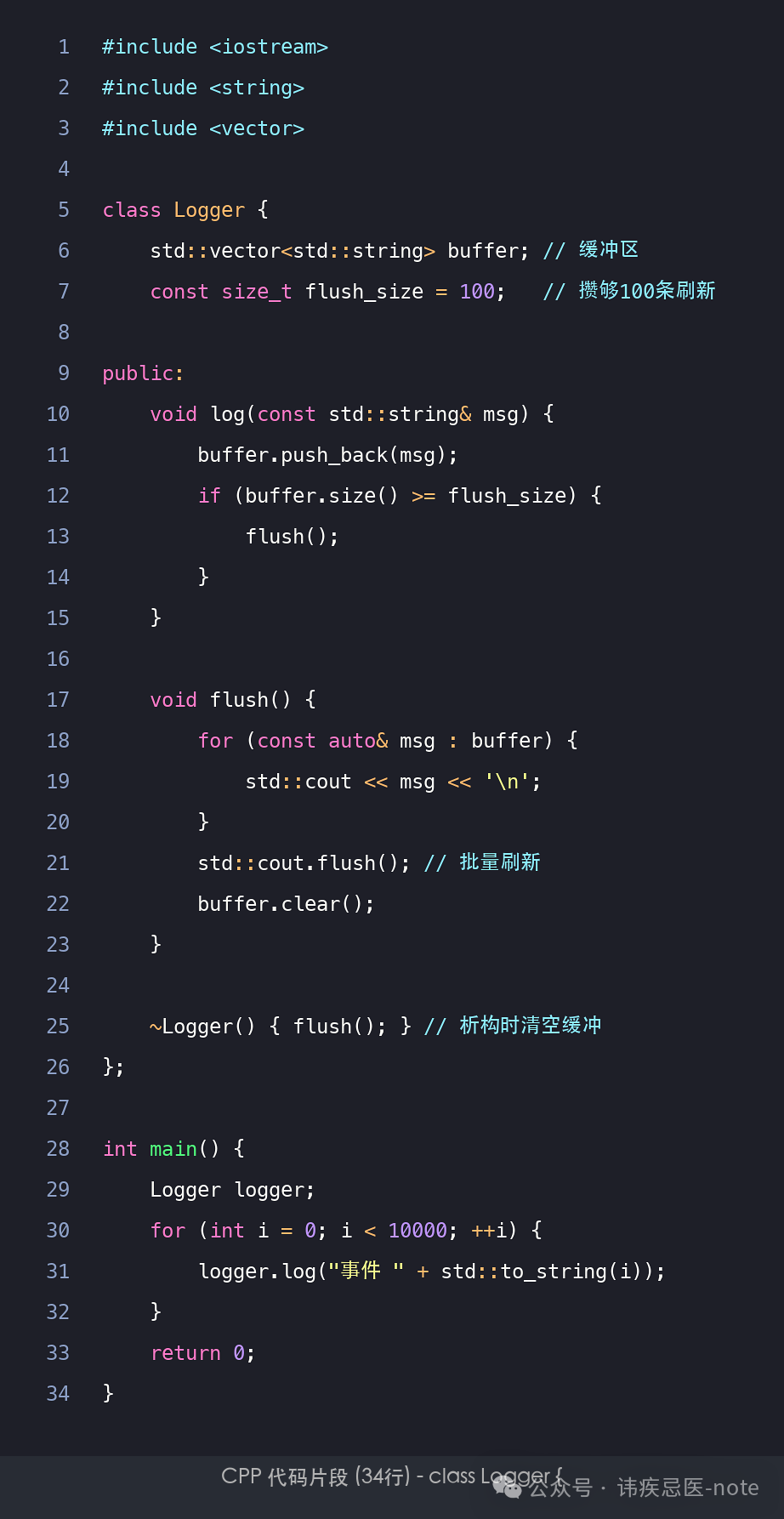
The optimized version accumulates logs and flushes every 100 entries, significantly improving performance while ensuring data is not lost. Want to see it in real-time? Just adjust the <span>flush_size</span> to a smaller value, and it’s very flexible.
My Stance: Use std::endl Sparingly, Embrace Control
I have a unique perspective: <span>std::endl</span>’s biggest problem is not performance, but that it takes away the programmer’s control over output. Flushing should be decided by us, not left to a combination of “newline + flush.” The charm of C++ lies in fine control, and <span>std::endl</span>’s “one-click package” design somewhat deviates from this intention. Therefore, I advocate:
- Separate newline and flush;
<span>'\n'</span>for new lines,<span>flush()</span>for flushing. - Manually optimize based on the scenario; don’t let tools lead you by the nose.
Learning C++ means mastering the details; that’s the way to become a master!
References
- Stroustrup, B. (2013). The C++ Programming Language (4th ed.). Addison-Wesley.
Latest Popular Articles Recommended:
The Road to C++ Developers’ Comeback: Most High-Paying Positions Are Hiring CUDA Talent, Are You Still Hesitating?
From CUDA Novice to Expert: How I Optimized Complex Computational Tasks Using Thread Hierarchy
Struggling with C++ File Operations in Project Development? This Article Is All You Need!
Tired of the Complexity of C++ Multilanguage Processing? This Article Will Help You Master Advanced Techniques with Ease!
Old Binary Operations Inefficient? C++23 New Features Teach You to Redefine Efficient I/O!
Still Troubled by Time Handling in Old Projects? C++20/23 New Features Come to the Rescue!